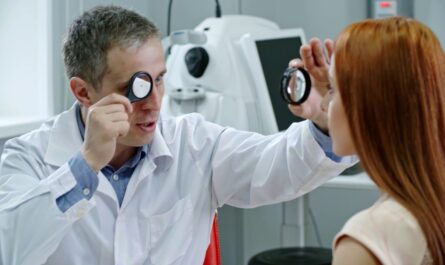Time is of essence when it comes to treating stroke. Every minute counts as brain tissue continues to die without blood supply. Global health organizations are working to cut down “door-to-needle” time – the time taken between a patient arriving at the hospital and receiving life-saving clot-busting medication. One innovative approach that is revolutionizing pre-hospital stroke care is the use of Mobile Stroke Units.
What are Mobile Stroke Units?
Mobile Stroke Units are specially equipped ambulances that function as mini-stroke centers on wheels. They are staffed by healthcare professionals trained in stroke diagnosis and treatment. In addition to the standard ambulance equipment, these units have CT scanners, laboratories and telemedicine capabilities. This allows for comprehensive stroke evaluations to be performed at the site of emergency instead of waiting for transport to the hospital.
As soon as a suspected stroke call comes in, the Mobile Stroke Unit is dispatched to the location. On arrival, the patient receives a rapid clinical examination and CT scan of the brain is done inside the ambulance itself. This helps identify if the stroke is caused by a blockage (ischemic) or bleeding (hemorrhagic) and guide immediate treatment decisions. For ischemic strokes, clot-busting medications can be administered on board if deemed appropriate. Vital information is also relayed to the receiving hospital in advance to prepare for the patient’s arrival and expedite care.
Benefits of Mobile Stroke Units
By bringing advanced diagnostic facilities into the field, Mobile Stroke Units have demonstrated significant benefits over traditional ambulance transports:
Reduced Time to Treatment: Door-to-needle times for clot-busting medications are cut down significantly, often by 30-120 minutes. This translates to better clinical outcomes as more brain tissue is salvaged.
Improved Diagnostic Accuracy: CT scans performed at the emergency site allow for accurate differentiation between ischemic and hemorrhagic strokes within minutes. This speeds up triaging to the right treatment stream.
Streamlined Hospital Handoff: Sending preliminary reports and images ahead of arrival prevents delays in the ER for repeat evaluations. Patients are rushed straight to stroke-capable treatment areas.
Expanded Reach: Mobile Stroke Units can reach emergencies in remote or traffic-congested areas faster than ground ambulances waiting in ER queues. This improves access to stroke care for entire communities.
Potential for Additional Therapies: With timelier diagnoses, new treatments like endovascular thrombectomies may become feasible options even in the pre-hospital phase. This could further broaden therapeutic time windows.
Demonstrated Effectiveness
Pilot programs utilizing Mobile Stroke Units have reported excellent results. A landmark trial in Berlin showed treatment arriving 50 minutes sooner – and one in three additional patients receiving intravenous thrombolysis compared to standard ambulance transport. Long term follow up demonstrated improved functional recovery as well. Similar positive findings have been noted from early adopter cities in the United States like Houston and Los Angeles.
Scaling Up Global Implementation
Seeing the success, health agencies worldwide are now working to scale up Mobile Stroke Unit services. In low-to-middle income countries facing a growing stroke burden, these units can help bridge infrastructure gaps. With development funding, adapted versions are being deployed that are still fully functional but less high-tech to suit resource constraints. Standard treatment protocols are also formulated to optimize outcomes.
Regulatory bodies are updating pre-hospital care guidelines to incorporate Mobile Stroke Units wherever feasible settings. Governments are enacting collaborative care models between emergency medical services and hospitals. Private sector interest is emerging with new ambulance fleet partnerships announced each year. Telestroke networks are establishing to link regional bases for remote guidance. Overall, the effort aims at establishing Mobile Stroke Units as an essential part of every community’s basic emergency stroke services globally over this decade.
Timely treatment remains the cornerstone for improving stroke survival and recovery rates worldwide. By taking stroke evaluation facilities right to the emergency scene, Mobile Stroke Units hold great potential for revolutionizing pre-hospital management of this medical emergency. Early evidence clearly demonstrates their effectiveness in reducing treatment delays and improving outcomes. As implementation expands globally with innovation and collaboration, Mobile Stroke Unit programs are paving the way for faster, equitable access to lifesaving acute stroke care worldwide.




